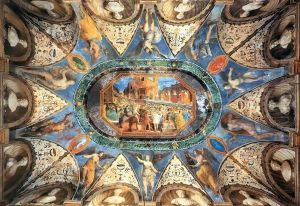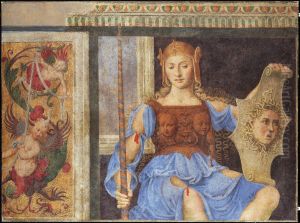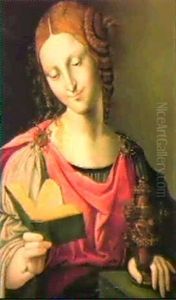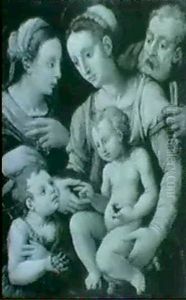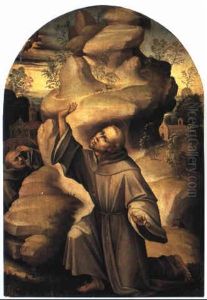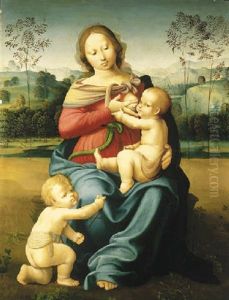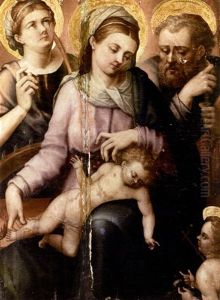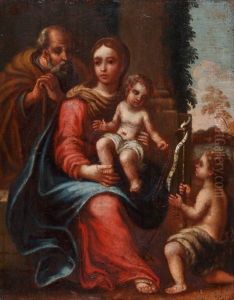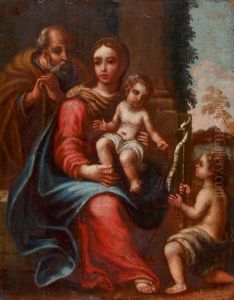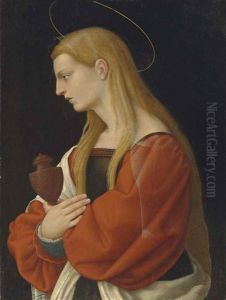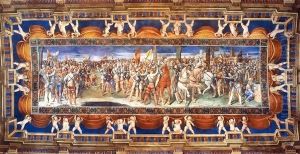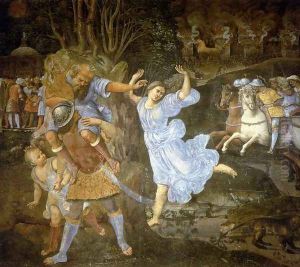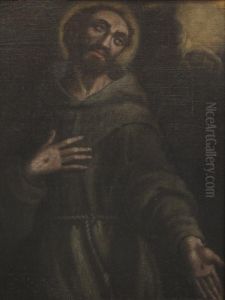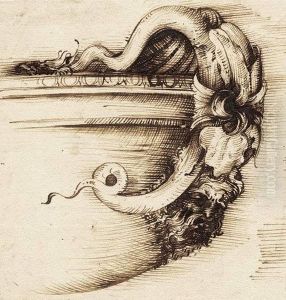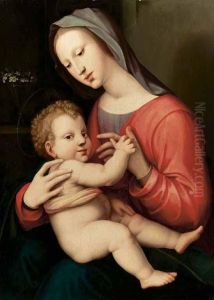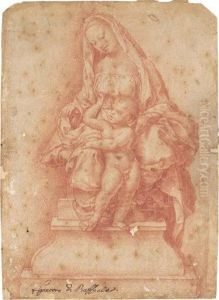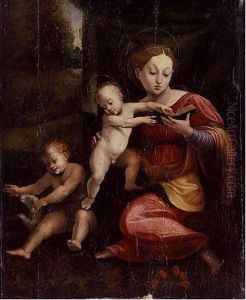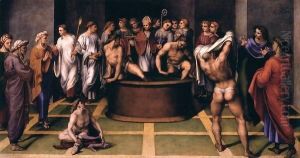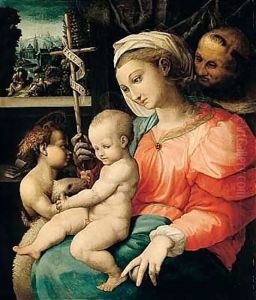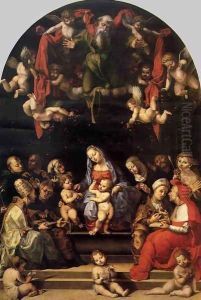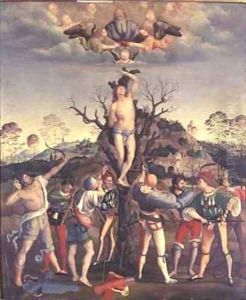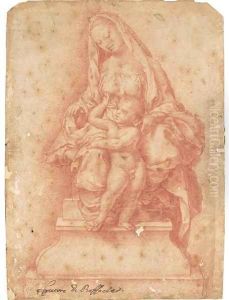Girolamo Genga Paintings
Girolamo Genga was an Italian painter and architect during the Renaissance period, known for his contributions to both the visual arts and architectural design. Born in Urbino, a cultural hub of the Renaissance under the patronage of the Montefeltro and Della Rovere families, Genga's early life was steeped in an environment that fostered his artistic talents. He initially trained under Luca Signorelli in Cortona, where he absorbed the lessons of the Umbrian and Florentine traditions, which would significantly influence his artistic development.
Genga's work as a painter is marked by a strong command of draughtsmanship and a keen sense of composition, qualities that he shared with his contemporaries Raphael and Signorelli. His paintings often depicted religious themes, mythological scenes, and portraits, characterized by their vivid detail and emotional depth. Among his notable works are frescoes in the Villa Imperiale near Pesaro and in the church of Santa Maria della Pace in Pesaro, showcasing his mastery in creating complex, narrative-driven compositions.
Apart from painting, Genga was also a distinguished architect. He was actively involved in the design and construction of several important buildings in the Urbino and Pesaro areas. His architectural style reflected the classical ideals of the Renaissance, emphasizing symmetry, proportion, and the use of classical motifs. One of his significant architectural contributions was the design of the Ducal Palace in Urbino, where he worked alongside other renowned architects of the time.
Throughout his career, Genga served various patrons, including the Della Rovere family, who were instrumental in the cultural and political life of Urbino and its surrounding regions. His works, both in painting and architecture, played a crucial role in the development of the High Renaissance style in Italy, bridging the gap between the early Renaissance's emphasis on linear perspective and the High Renaissance's focus on dynamism and expression.
Girolamo Genga's legacy is that of a versatile artist who was able to excel in multiple disciplines, contributing significantly to the cultural richness of the Renaissance. His works remain a testament to his skill, creativity, and the enduring appeal of Renaissance art and architecture. Genga died in 1551, leaving behind a body of work that continues to be studied and admired for its artistic and historical significance.
